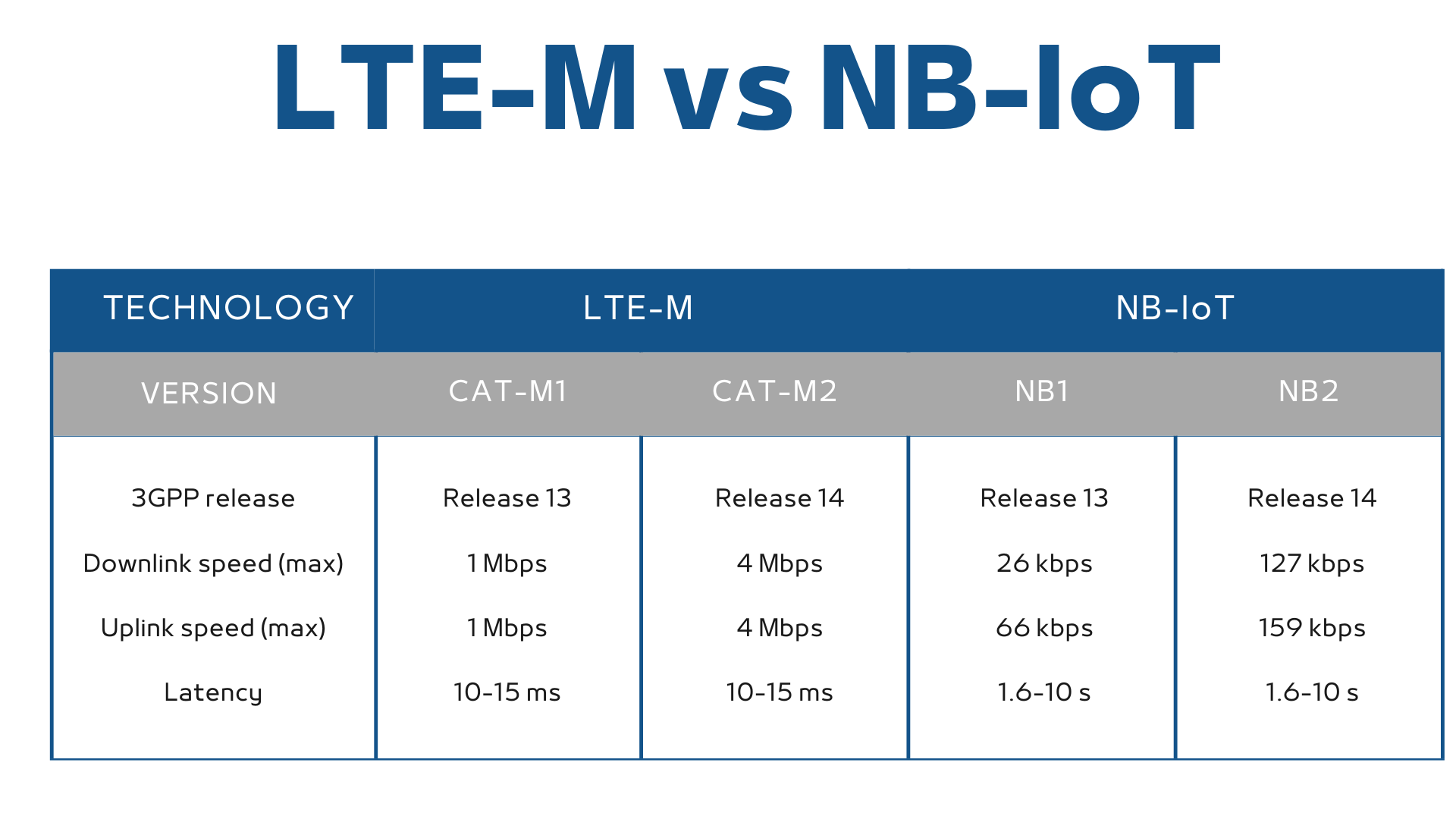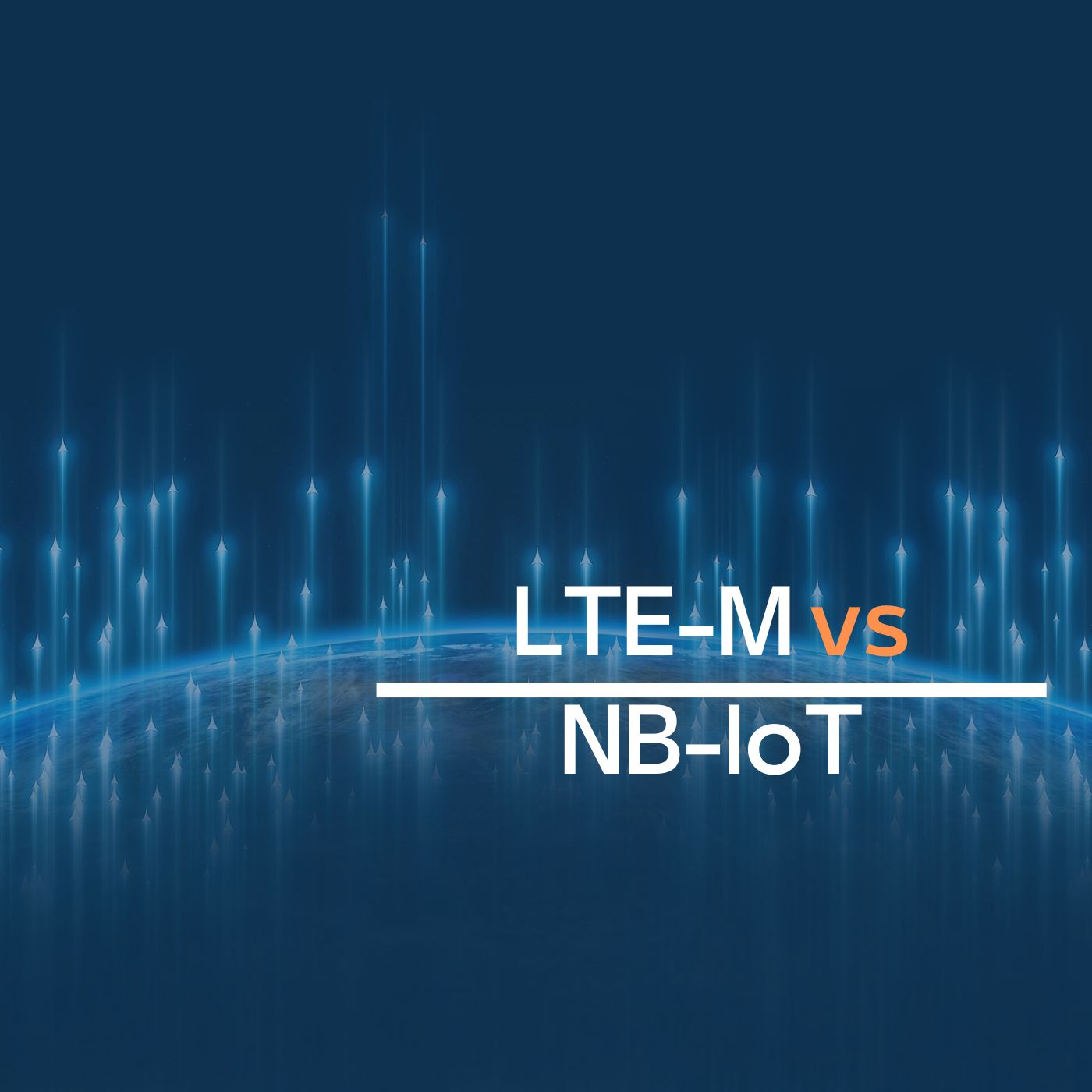LPWAN (Low Power, Wide Area Network) is not a technology standard but rather a group of wireless technologies that, as the name suggests, use low power but cover a large area. LPWAN is suitable for IoT, devices such as those in smart cities, smart sensor networks and fleet management do not need as much bandwidth and speed as mobile phones. Two LPWAN technologies are found in mobile networks; NB-IoT and LTE-M. The expansion of NB-IoT and LTE-M networks worldwide is accelerating the development of IoT. NB-IoT and LTE-M (mosto known as CAT-M1) are two technically very similar technologies. There are many similarities and also differences, so which is better? The quick answer is that it’s like choosing the right car; it depends on what you will use it for. The slightly more complicated answer, well you’ll find it below.
NB-IoT or LTE-M?
Choosing between LTE-M and NB-IoT requires an understanding of the different key characteristics the two technologies offer, such as latency and speed. Think carefully about your needs before choosing a solution. Sometimes, you don’t need to choose between these technologies, but both are equally suitable. After analyzing the similarities and differences between LTE-M and NB-IoT, you can make an informed choice that will make your system successful for a long time. Both are part of the 4G and 5G standards and have been brought forward by the industry due to their unique advantages.
What fits your purpose?
LTE-M and NB-IoT both use simplified versions of the common 4G/5G standard, which reduces hardware complexity and cost as the technology is deployed at a larger scale. LTE-M and NB-IoT both offer better coverage than 4G in, for example, indoor environments and remote locations. NB-IoT and LTE-M are the two technologies that have been selected as the “Massive Machine Type” communications standards within the 5G standard. Both standards are specified as LPWANs and are of great importance regarding communication between machines, with different advantages and disadvantages.
Battery life
Both standards have power-saving features available. Here and now, we will focus on three of them, but more features are available.
First, power saving mode, in simple words, means you can put your device into deep sleep. Devices can go into the power-saving mode or connect to the network less frequently. However, it is still attached to the network, so once woken up, it can receive and transmit directly. So what is the purpose, then? The idea is to save power in deep sleep while having the device ready for communication and not waste a lot of battery doing the registration that normally takes place when a device logs in to the network.
Secondly, EDRX, extended discontinuous reception is the second one. With this feature, you can pause the reception of your device to save battery. This functionality is not new; it has existed for a long time in mobile phones. If you have a regular router, the eDRX kicks in relatively fast; even after 10 seconds of no transmission, you can see this as longer ping times for the link. In that case, the device only sleeps for seconds. With eDRX and LPWAN you can sleep much longer and save a lot of battery.
The third and last one is the long periodic TAU. TAU stands for Tracking Area Update and is an update of the device’s position. Say you have a device on the move; it will register with a new base station as it travels; this is called normal TAU. Periodic TAU is initiated regularly to check if the devices are available once registered in that cell. The network asks for an updated position. If the device fails to report, the network will disconnect that device. With long periodic TAU, we can increase the timer so your device does not have to send an update. This behaviour will enhance the battery life.
I have put together a longer post for NB-IoT here, so please read that one if you want to know even more.
Enhancing coverage
These two technologies have a few tricks up their sleeve to enhance coverage. One is repetition which helps coverage and deep penetration. The essential function is that the device or base station sends the same message several times if it’s in a bad location from a radio perspective.
Coverage enhancements consume battery. So if the device sends the same message repeatedly, it will use the radio for longer, thus consuming more battery. So it would be best if you balanced this by trying to find a good location from a radio perspective; there is no shortcut to bypassing the laws of physics.
Power saving and coverage enhancement, well, these two technologies share many characteristics. Let us look at what differs: throughput, latency, and mobility. These three vary quite a lot.

As I started this post with NB-IoT and CAT-M1 and now present NB1/NB2 and M1/M2, you need an explanation. 3GPP has released two different versions of these standards. The one with “1” is the first, and “2” is the second. The second one has higher speeds and improved characteristics. At the same time, most operators today (at least in Sweden) support NB1 and M1.
As you can see, LTE-M has a big leg up, it is up to 4 Mbps. The same goes for the latency; LTE-M inherits the low latency you have in LTE in general. It is milliseconds, almost real-time. It’s not as fast as the low latency features of 5G, the ultra-low latency, but it’s still excellent compared to NB-IoT, where we’re talking several seconds.
Consider this when looking at your use case and what standard to use. If you are aiming for a use case that is more or less real-time, maybe you will press a button and want a valve to open. Then you don’t want to wait 10-15 seconds for the valve to open. Then it would help if you had LTE-M for the throughput.
Another important thing is that you may need a device that does not require such a high throughput, but you must consider doing firmware updates. Then LTE-M is still the better fit. You may need that to enhance your function or even because of a security threat, then you need to do a firmware update, and it’s always easier to do that with higher throughput.
Narrowband IoT does not support voice, and LTE-M does; however, be aware that not all operators have this feature enabled yet. As for SMS, using LTE-M, you will have little problems with the operators, but NB-IoT and SMS are rarely supported.
Roaming
NB-IoT is designed for static scenarios in sometimes noisy or remote locations. It can handle moving devices and re-register to the network, but it’s not meant to be used for that. So in mobile applications, do not look at the NB-IoT products. LTE-M, on the other hand, inherits the standard LTE roaming features.
There are a lot of operators around the world that have deployed either NB-IoT, LTE-M or both. But that’s different from excellent support for roaming between countries or operators. If you’re aiming for a global deployment, in a situation where you could have a SIM card used in two countries, then LTE-M is your choice. LTE-M has had a faster rollout because it’s much easier for operators to roll out LTE-M than NB-IoT.
Conclusion:
There are similarities and differences. Both standards are excellent for low energy consumption and great coverage. They are 3GPP standards, and they are a part of 5G. There is no one flavour of ice cream for all scenarios. If I would pick one, then I would pick LTE-M. You will have more flexibility in the future. You will have a more forgiving technology that can handle more data protocols. You will have a more straightforward implementation procedure, and you will have a more extensive flexibility.

